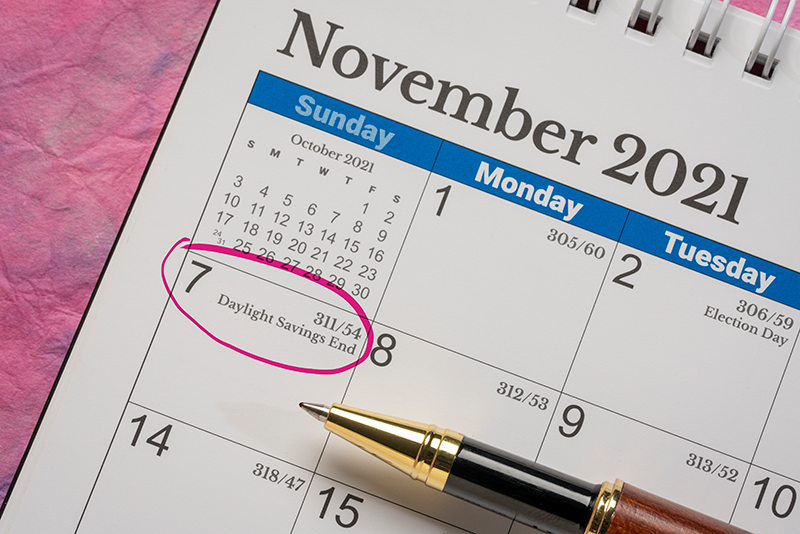
Practice Perfect 784
My Beef With Daylight Saving Time
My Beef With Daylight Saving Time

So…it took me about a week to write this editorial because November 7, 2021, was the day that daylight saving time changed in my part of planet Earth. It took me a week because that’s how long I needed to recover from the devastation this monumentally horrible idea has on my life each year. I mean, what were they thinking? Change the time almost randomly near the end of March and then change it back again near the beginning of November? Genius idea. Best one in history.
Of all the stupid human ideas in our history daylight saving time has to be the second worst. What’s the worst idea, you ask? Well…the slinky, of course! If you don’t remember this stupid toy, then you’re a bit younger than I am. Google it, and you’ll see that this “fun and wonderful toy” is a complete waste of money. The advertisers used this phrasing – yes, I remember the song they sang during the commercial (“A slinky, a slinky, the fun and wonderful toy / A slinky, a slinky it’s fun for a girl and a boy”). Yes, those are really the lyrics; they’re so bad they’re burned into my brain. You think it’s a pretty cool toy at first. A big spring that “walks” down steps? How fun. Then you realize quickly it’s a stupid spring that walks down steps. Big deal. Where does this thing end up? In the closet. Sorry slinky makers – monumentally dumb idea.
See? Daylight saving time is so bad it actually has me writing about slinkies! What’s wrong with me? I was once a half-way intelligent podiatric physician and surgeon working hard to help people and teach students and residents. I’ve contracted DSTD – daylight saving time disorder. I wouldn’t be surprised if this is an actual psychological disorder listed in the Diagnostic and Statistical Manual of Mental Disorders - 5. And, clearly, this disorder must be contagious since YOU are reading this!
I’ve contracted DSTD – daylight saving time disorder
I also realized just now there’s a link between slinkies and daylight saving time – “spring forward, fall back”. Get it SPRING forward? This makes me wonder…did the creators of the slinky write the mnemonic that supposedly helps us remember what to do with the clock? Hmmm. Conspiracy anyone?
OMG I’m doing it again! One of the important symptoms of DSTD is a complete lack of focus. Darn daylight saving time. I shake my fists at thee!!! (Yes, another symptom is hyperbole). Yet another symptom is inability to spell correctly – I first wrote it “hyperbol-y”. Ah, ha! There it is again, lack of focus. Clearly, I have a bad case of DSTD. I think I might have to change that name – it sounds like a venereal disease! Stop getting distracted, Shapiro!
Ok, back on track. Where does the second worst idea in human history come from, anyway? It allegedly arose first in World War I Germany in 1918 as a way to save fuel.1 In the United States daylight saving time became standard in 1966, and currently only Arizona and Hawaii do not observe it – go Arizona and Hawaii! It supposedly allows us to make better use of energy and daylight. Seventy countries around the world use daylight saving time2, with beginning and end dates varying – because variable times are conducive to a healthy and happy world, right? But does daylight saving actually lead to health and happiness?
Does daylight saving actually lead to improved health and happiness?
In 2001 Varughese and Allen examined data from 21 years of fatal automobile accidents. They found a significant increase in the rate of fatal accidents on the Monday following both the Spring and Fall time changes3. These researchers attributed the increase to sleep deprivation in the Spring and late night or early Sunday morning driving (with sleep deprivation and increased Saturday alcohol consumption) in the Fall.
Some driving outcomes change as a result of behavioral changes, but so too do behaviors at the home. Sexton and Beatty found people slept less in the morning and spent more time awake at home during the week around the Fall day light saving time change4 encouraging more energy use (both lighting and heating). People appear to spend a little less time at home during the Spring day light savings change, but the researchers point out the Fall increased use of electricity outweighs the Spring savings.
I’m not hearing a very strong argument to keep daylight saving time. Car accidents, less sleep, and more energy use? Great combination.
Car accidents, less sleep, and more energy use? Great combination! Let’s keep Daylight Savings Time forever…
What about happiness? I don’t need a research study to tell me I’m less happy trying to figure out how to change the time on my kitchen stove clock. You know that clock, right? You have one too. The clock that requires holding button one while pushing button two, desperately trying but never quite succeeding to get the time right. Didn’t you know this is another symptom of DSTD? The inability to change the time on one’s clock. It’s called chronodystopia. Oh, and yes, the final symptom of DSTD is making up fake diagnoses. What can I say? Daylight savings time has that effect on me?

-
How Daylight Saving Time Got Started. www.nbcchicago.com/news/local/how-daylight-saving-time-got-started/2666081/. Nov 1, 2021. Last accessed Nov 12, 2021.
Follow this link -
History of Daylight Saving Time (DST). https://www.timeanddate.com/time/dst/history.html. Last accessed Nov 12, 2021.
Follow this link -
Varughese J, Allen RP. Fatal accidents following changes in daylight savings time: the American experience. Sleep Med. 2001 Jan;2(1):31-36.
Follow this link -
Sexton AL, Beatty TK. Behavioral responses to daylight savings time. J Econ Behav Organ. 2014 Nov 1;107:290-307.
Follow this link































Comments
There are 0 comments for this article